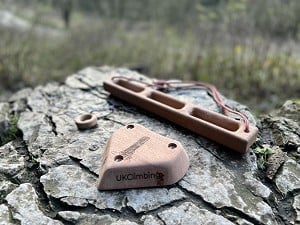
The Mammut Climbax is a pair of wristbands which track your climbing session and performance. It's the first time we've seen something like this and so I'm going to answer the following two questions: 'What does it do?' and 'Is it any good?'
What does it do?
In a nutshell the Climbax is a pair of wristbands which you wear whilst climbing and which sync up with the Mammut Climb app on your phone. The system tracks a number of performance statistics such as:
- the amount of time you hold on with each hand
- how long you're on the wall and how long you rest for
- how many climbs you've done
- how many climbs you've completed
- how many moves you've made and your moves per minute whilst climbing
- how far you've climbed
- grades - sort of. The climbing wall needs to use the Griptonite tags on their climbs for this to work.
In addition to tracking these 'basic' stats the Climb app also compares your session to your previous session(s) to show your performance vs. your personal best. This information is collated into handy graphs so you can view your performance, in boulder or sport, by month.
The final feature of the Climb app is viewing and comparing yourself to other climbers. You can follow or be followed by other climbers (shout-out to Rae from Gosport if you're reading this, my one and only follower) and you can see the stats from their sessions in the same way that you can see your own. The idea is that you can compare yourself to your friends and set each other challenges. This is a fully-fledged feature as Mammut set regular competitions for Climbax users to take part in and you can unlock awards for reaching certain climbing milestones.
Using the Climbax
What's it like to use the Climbax? The short answer is: it's pretty simple. You download the Mammut Climb app, turn each of the wristbands on so that they sync up with the app and press a button to start your session. You can leave your phone in your bag. You then climb as normal apart from pressing one of the wristbands when you successfully complete a climb. At the end of your session, you tell the app that you've finished climbing, turn your wristbands off, and they download the data to your phone. You can then view your session stats as listed above.
The devices are well made and fit nicely on your wrist without being obtrusive: once you put them on you don't really notice them - you just climb as normal. I've been impressed with the quality - there's nothing fiddly, tricky or breakable. They're well made, easy to charge, simple and well designed.
The battery life also seems to be very good. I've used my Climbax for eight sessions since I got it, which is around 16 hours, and I haven't had to charge it yet. It comes with a double-ended micro USB charger so that you can simultaneously charge both of the devices.
Using the Climb app
The app is also simple to use. Once you've downloaded your session from your wristbands you can easily navigate through the various stats. In addition you have a 'feed' which includes your own sessions along with the other climbers you follow, a competitions tab to compare yourself to your other climbers, and a peformance tab to analyse your performance over time and different sessions. It's all nicely laid out, and looks clean.
One pretty big limitation is the Climbax's ability to track your grades. Currently, the only way to add a grade to each of the climbs which you log is to scan a tag and the start of the route/problem with a wristband before you climb. This works well but it does depend on the wall using the Griptonite technology and the vast majority of walls currently don't use this. That creates a bit of an issue as grades - whether you like them or not - are a very good way of tracking climbing performance. 'How many 6cs have I climbed this session?' 'Did I complete a yellow boulder problem last week?' 'Was my personal best 7b or 7c in January?' are all the kinds of questions it's very useful to ask yourself if you're monitoring your performance and training. It also makes all the data in the Climb app much more tangible and adds a lot of context. Seeing not only how many 6cs you climbed in a session, but how many moves you make per minute compared to a 6b, or if you're favouring a certain hand when you're climbing at your limit, is very useful. Currently you can't manually input the grades to the Climb app either, which would be a workaround, albeit time-consuming and I imagine not very popular. Basically you want the Climbax to be able to recognise the grade of each climb that you try automatically, and currently this depends on climbing walls taking up the Griptonite technology.
The only complaint I have about the app itself is that you can't see your session stats in real time. You have to wait until you finish your session and download the data until you can see how you've performed. This means you can't check things like 'I want to complete 20 problems today - how many have I done again?', 'How active have I been this session? I was aiming for 30% climbing time 70% rest' or even 'How much time has passed since I last climbed?'. This is especially relevant if you're taking part in the competitions: If you need to climb 100m this session to get 1st place but you're unsure if you've hit that target yet you can't check until you've ended your session. Hopefully this is something which Mammut will address in the future as it will only become more of an issue as/if they add more trackable stats to the Climbax.
Is it any good?
Having gone through what the Climbax is and what it's like to use I'm now in a better position to give you my opinion of it. One thing that may be clear from the above is that I think it's really good at what it does. Both the devices and app are well designed, simple and effective.
As a climbing tracker, there's an obvious big question: is the information that it's capable of tracking useful to me, as someone who is into training? The answer to that is yes and no. Firstly, the interesting bits:
- Time on and off the wall is really useful to know. It helps you understand if you're resting enough between sessions. It also helps to monitor the length of sessions and, combined with the graphs of each climb, helps to see when you're making fewer moves and getting tired.
- Attempts vs. tops is useful to know, particularly in a bouldering session. If you're looking at working to a certain level e.g 'try boulders that you can top in 5 attempts' or 'top 20 problems in a session', this kind of information is very helpful.
- The climb graphs themselves enable you to see, at a glance, how many moves you're stringing together and how many climbs you're completing in a session.
- Moves per minute is really interesting to compare between climbs as it gives you an idea of the speed at which you climb. How fast do I move on easy climbs vs. climbs at my limit? 90 minutes into my session do I makes fewer moves per minute on the same route that I climbed at start of my session? Am I climbing too slowly? (spoiler: if you're a trad climber the answer is 'yes').
- Grades are very useful to know but, and it's a big but, it depends if your wall has the Griptonite technology which enables the Climbax to track your grades. As I wrote above, grades make the whole array of stats that the Climbax provides much more colourful, fleshed-out and interesting. They also enable you to track your climbing progress much more effectively. This, after all, is the whole idea behind the Climbax, and so the effectiveness of the whole thing depends quite heavily on whether or not your local wall uses Griptonite. And that's a bit unfortunate because it puts the effectiveness of the device down to your local wall, and how well they implement the Griptonite tagging system - if they use it at all.
And secondly, the not so interesting bits:
- For me, how far I've climbed is not something that I'm concerned with. I'm more interested in how many climbs I've done and how hard they are. It could be useful for training endurance, when you want to make sure that you've climbed enough in a session to meet your training goal, but then this could be more accurately determined by the number of moves you've made and would still require you to know how hard the climbs were.
- How long you hold on with each hand. Perhaps I'm missing a trick here but, whilst I'm sure that we all favour one hand slightly over the other, this doesn't seem to be too important. Often climbs require you to make certain moves with certain hands, and so it's not up to you which hand you spend more time on, hence it's not something you can change. However, the individual hand movements do help to inform lots of the other stats, so I can see why this is very important instrumentally if not intrinsically.
In an ideal world I would love it if the Climbax could (and I realise this is a bit of a stretch!):
- Track my whole session from the minute I walk into the wall. It would record how much time I spent stretching, fingerboarding, warming up and climbing etc. I could then see stats for all of it.
- Have programmable features for e.g fingerboarding. Rather than using a separate system on my phone or a stopwatch I could set up my fingerboarding protocol, press a button, and the timer and exercise would begin. This would be possible for all types of training exercises.
- Tell me where I was under/overperforming on each area of my session compared to my other sessions and to other climbers of a similar level.
- Suggest exercises to me: e.g 'you've done loads of strength work this week, how about some antagonistic stretching'.
- Allow you to input your training plan, so as soon as you got to the wall the Climbax would tell you what exercises you need to do.
- If we're going super high-tech it could tell you when you're adequately rested for your next attempt on a route/boulder.
At £170 the Climbax isn't cheap but considering the technology involved, and the price of other wearables out there, I feel like it could be more expensive. As such you might not be buying one on a whim but if you're into tech then the price may be acceptable.
A quick word on the social aspect of the Climb app. There's a big emphasis on comparing yourself to your fellow climbers and friends, and entering competitions. A huge draw of things like Strava is this comparison between you and your friends and so this is a potentially very important part of the Climbax. The social aspect is all very well implemented and the framework is there. However, I currently don't have any friends who are using the Climbax, and there doesn't seem to be a huge pool of other people to compare myself to, and so I haven't yet been enticed by these features. A social system requires lots of people to be using it for it to be useful - Facebook wouldn't work if there were only a few people on there. I also personally find comparing myself to others a bit unhealthy, so I'm trying to steer clear of this type of thing. That said, with more people using the Climbax, and perhaps for a different person, this may be a huge plus.
Conclusion
So, overall, what do I think about the Climbax? It's good at what it does and if you're interested in tracking the statistics that it's currently capable of tracking then it's a unique piece of technology that's useful, fun and novel to use. That said, the information it tracks is currently limited and a large part of its functionality depends on whether or not your climbing wall has the Griptonite technology to track grades. I do think that the Climbax has huge potential: look at where iPhones are now and where they came from. The Climbax could become an extremely useful and popular piece of training technology for climbing.

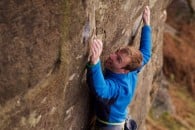



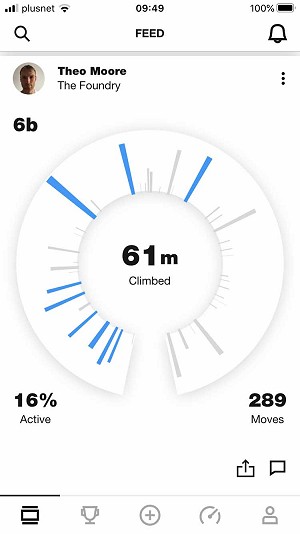
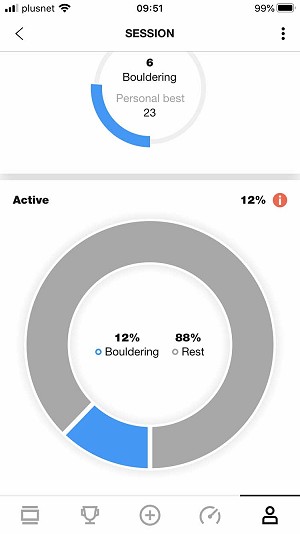

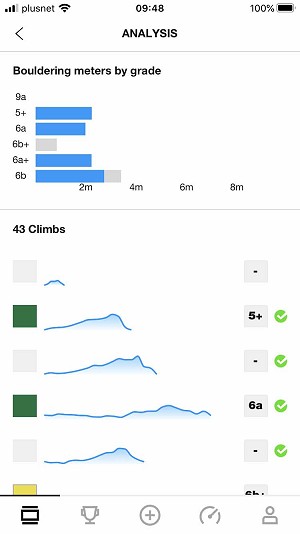
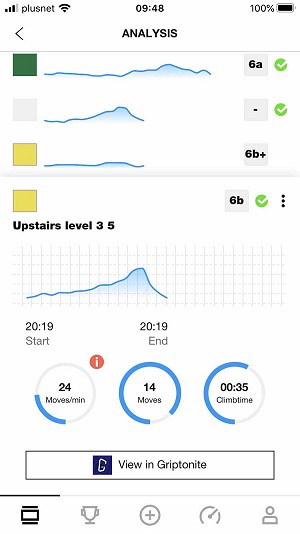


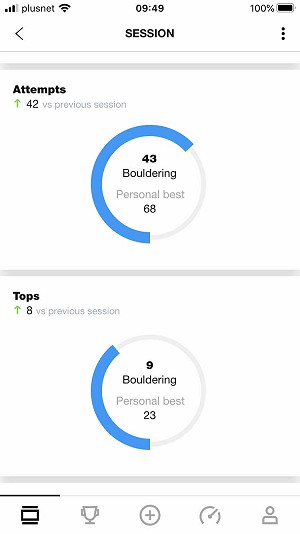
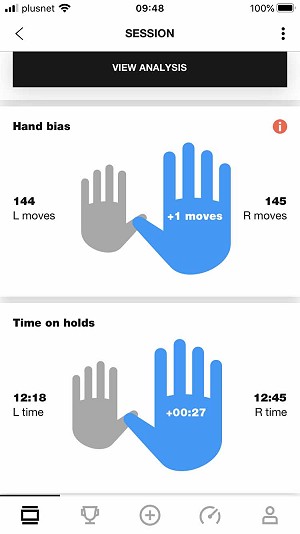

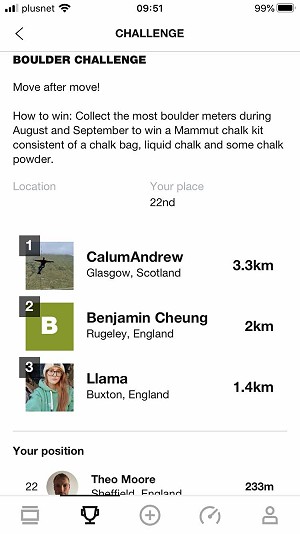
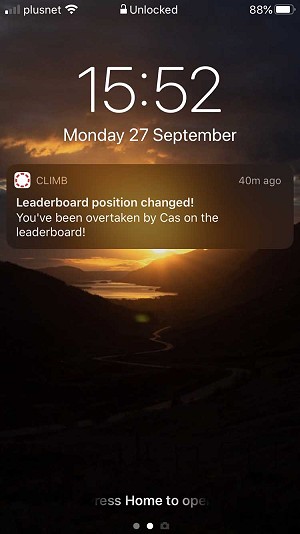

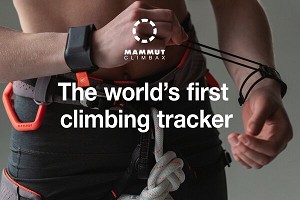



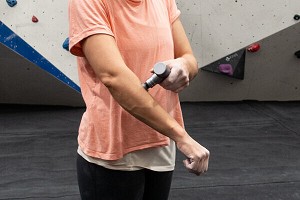
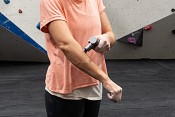



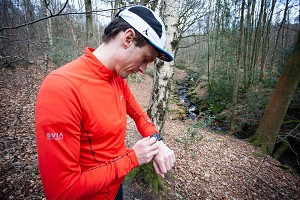
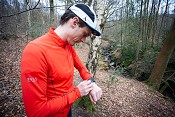


Comments
The Griptonite thing seems like a complete deal-breaker, especially given people might like to use this outdoors.
That’s an interesting point, I hadn’t really considered using the Climbax outdoors. I feel like it’s currently more suited to indoors as it’s a more controlled environment with more regular patterns of behaviour. The Climbax is also certainly more suited to training which more often happens indoors than out.
That said, how would it work outdoors? I can’t see the Griptonite tags being installed on sport routes and I can’t imagine how they’d be installed on trad routes or boulder problems. Would you even need them? Climbs outdoors are more significant and so, if it was possible, climbers may be more inclined to enter outdoors climbs in to the Climb app themselves than they would indoor climbs. Perhaps Griptonite wouldn’t be such a deal breaker here but I just can’t currently see myself wanting to track my outdoor climbing stats as much as my indoor ones - imagine potential climbing partners being able to see your climb:rest ratio, I’d never get a belayer again!
This thing just feels like an answer in search of a question.
Me, I simply record each session on Notes on my phone - how many climbs at each grade and in what style. Any firsts (1st time lead/dog a grade instead of TR for instance) I mark with an asterisk. If I'm knackered after the session then it was a good one, whether I rested a hell of a lot between 3 lead attempts or whether I've been doing strength endurance on autobelay. If I want to compare September to March, I just scroll back. I honestly don't give a flying f**k about whether one hand has grabbed a few more holds than the other one, and I'm missing the bloodstream probe on this thing giving me my average dopamine, endorphine and adrenaline levels for each route. Without this last feature I have no way of knowing if I've had fun or not.
Don't think I'll be buying anything from Mammut again; this kind of technology, developed and pitched for average climbers, quite honestly makes me sick. It has nothing to do with what are, for this aging git, the most elemental aspects of my enjoyment of this activity. And especially: I don't see a single advantage over notes (for the climbing sessions) and Excel tables (if you're taking your hangboarding or whatever seriously). So £170? No thanks!